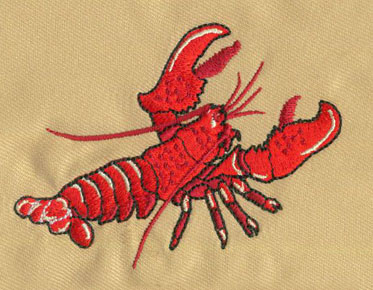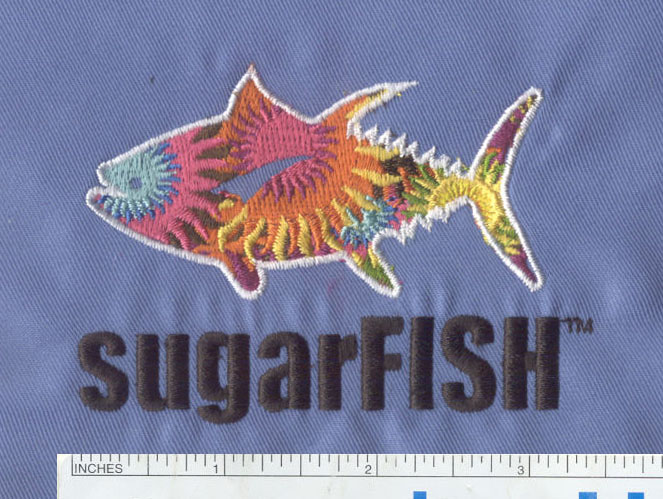Chenille Embroidery: The Art of Plush Textures and Timeless Elegance
Embroidery is a craft that has continuously evolved over the centuries, giving rise to numerous techniques and styles. One such technique, Chenille embroidery, stands out for its ability to create plush textures and add a touch of timeless elegance to various textiles. In this in-depth exploration, we will unravel the art of Chenille embroidery, delving into its technique, historical roots, and its contemporary applications.
Understanding Chenille Embroidery
Chenille embroidery is a specialized embroidery technique that is known for creating a plush and textured finish on fabric. It simulates the look of traditional chenille fabric, which is characterized by soft, tufted yarns forming a velvety surface. The term "chenille" is derived from the French word for "caterpillar," referencing the fuzzy texture of the fabric. Chenille embroidery achieves a similar effect by using a special chenille yarn and a unique stitch pattern.
The Key Elements of Chenille
Embroidery
To create the characteristic chenille texture, several key elements come into play:
- Chenille Yarn: Central to the technique is the use of chenille yarn. This yarn is composed of a core thread with fuzzy, velvety fibers protruding from it, giving it a caterpillar-like appearance. The combination of the smooth core thread and the fuzzy fibers is what creates the plush texture.
- Loop Stitch: Chenille embroidery predominantly uses a loop stitch, which is a variation of the chain stitch. The loop stitch is essential for capturing and securing the chenille yarn to the fabric. It creates loops of yarn on the fabric's surface, simulating the appearance of traditional chenille.
- Layering: Achieving the desired plushness involves multiple layers of chenille yarn. The process typically includes stitching a base layer of yarn and then layering additional threads over it, creating a dense and soft surface.
The Technique of Chenille
Embroidery
The process of creating chenille embroidery involves several steps:
- Design and Digitization: Chenille embroidery starts with a digital design that specifies the areas where the chenille stitches will be applied. This design is created using specialized embroidery digitization software, allowing precise control over stitch patterns and densities.
- Hooping and Stabilization: The fabric to be embroidered is hooped securely to provide stability and ensure accurate stitching. Proper hooping is crucial for the chenille embroidery process.
- Base Stitching: The base layer of chenille yarn is stitched onto the fabric using the loop stitch. This creates the foundation for the plush texture.
- Layering: Additional layers of chenille yarn are stitched on top of the base layer to build up the desired texture. The number of layers and the density of the yarn can be adjusted to achieve the desired plushness.
- Trimming and Carving: After the layers are in place, excess chenille yarn is carefully trimmed away, leaving behind the tufted surface. To enhance the texture, some areas may be carved or brushed to create variations in height and density.
Historical Roots of Chenille Embroidery
The origins of chenille embroidery can be traced back to the early 19th century in France. During this period, artisans began experimenting with chenille yarn to create intricate and tactile designs on textiles. The technique quickly gained popularity, and by the late 19th century, chenille embroidery was being used extensively for decorative purposes, particularly in fashion and interior design.
Chenille embroidery reached its zenith during the Art Deco era of the 1920s and 1930s. It was during this time that the technique was employed to create luxurious, plush textiles that adorned fashionable garments, draperies, and upholstery. The allure of chenille embroidery lay in its ability to add a sense of opulence and depth to various items, making it a symbol of sophistication.
Contemporary Applications of Chenille Embroidery
In the modern era, chenille embroidery continues to captivate with its timeless appeal and plush textures. Its versatility and elegance make it a favored choice for a range of applications:
- Varsity and Letterman Jackets: Chenille embroidery is widely recognized for its use in creating the iconic varsity and letterman jackets. The raised, textured letters and emblems on these jackets are often crafted using chenille embroidery, giving them a classic and prestigious appearance.
- Patches and Emblems: Chenille embroidery is commonly employed to design patches and emblems. These patches can be sewn onto uniforms, club jackets, or bags, adding a sense of identity and style.
- Home Decor: The plush texture of chenille embroidery is well-suited for enhancing the aesthetics of home decor items. Chenille throws, pillows, and curtains are cherished for their comfort and tactile appeal. These pieces create a cozy and inviting atmosphere within homes.
- Fashion: The fashion industry continues to embrace chenille embroidery for creating unique and luxurious garments. From evening gowns to accessories, chenille embroidery adds a touch of glamour and texture to fashion pieces.
- Vintage and Retro Revivals: Chenille embroidery is often associated with vintage and retro aesthetics. Its revival in contemporary fashion and design reflects a nostalgia for the elegance of bygone eras.
- Personalization: Chenille embroidery offers a distinctive way to personalize items. Monogrammed chenille patches or initials on clothing and accessories are cherished for their unique and timeless character.
- Crafts and DIY Projects: Chenille embroidery has found its place in the world of crafts and DIY projects. Crafters and hobbyists often use chenille embroidery to embellish handmade items and add a tactile dimension to their creations.
Tips for Working with Chenille Embroidery
For those interested in trying their hand at chenille embroidery, here are some tips to keep in mind:
- Choose High-Quality Chenille Yarn: The quality of the chenille yarn plays a significant role in achieving a plush and attractive texture. Opt for yarn with a smooth core thread and soft, fuzzy fibers for the best results.
- Experiment with Layering: Adjusting the number of layers and the density of the chenille yarn can result in varying levels of plushness. Experiment with different layering techniques to achieve your desired texture.
- Practice Trimming and Carving: Trimming and carving are crucial steps in chenille embroidery. Take your time to carefully trim away excess yarn and consider using small brushes or carving tools to enhance the texture.
- Use Appropriate Stabilizers: Properly stabilizing the fabric is essential for successful chenille embroidery. Choose a stabilizer that matches the fabric's weight and type to prevent shifting during embroidery.
- Maintain Your Equipment: Regular maintenance of your embroidery machine, including cleaning and lubrication, is important for achieving clean and precise chenille embroidery.
- Seek Professional Guidance: If you're new to chenille embroidery, consider seeking guidance from experienced embroiderers or taking embroidery classes to hone your skills.
Chenille Embroidery: A Nostalgic Textile Art
Chenille Embroidery is more than just an embroidery technique;
it's a tactile art form that adds a sense of nostalgia and comfort to a wide
range of items. Whether it's a letter on a varsity jacket or a cozy throw
pillow, Chenille Embroidery brings a unique texture that captivates both the
eyes and the sense of touch. It's a testament to the enduring charm of
traditional crafts in the digital age, offering a warm and inviting embrace to
all who encounter it.


